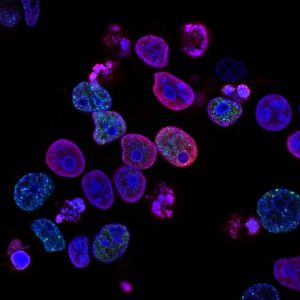How Is Cancer Diagnosed?
 No single test can diagnose cancer accurately. A thorough history and physical examination together with diagnostic tests usually require a thorough evaluation. Many tests are necessary if a person has cancer or if a different condition (e.g. an infection) imitates cancer symptoms.
No single test can diagnose cancer accurately. A thorough history and physical examination together with diagnostic tests usually require a thorough evaluation. Many tests are necessary if a person has cancer or if a different condition (e.g. an infection) imitates cancer symptoms.
Effective diagnostic tests are used to confirm or eliminate disease, monitor the disease process and plan and evaluate treatment efficacy. Repeated tests need to be done in some cases if a person’s condition has been changed, the sample taken is not good or the test result is abnormal.
Circumstances can include imaging, laboratory tests, tumor biopsy, endoscopic exams, operations and/or genetic tests. Cancer diagnostics can be a result of cancer testing.
Cancer diagnosis methods:
- Lab tests
- Diagnostic imaging
- Endoscopic exams
- Genetic tests
- Tumor biopsies
Types of lab tests used to diagnose cancer
Clinical chemistry uses chemical processes to measure body fluid and tissue levels of chemical components. Blood and urine are the most common examples of clinical chemistry.
Nearly every type of chemical component in the blood or urine is detected and measured in many different tests. Blood glucose, electrolytes, enzymes, hormones, lipids (fats), other metabolism and proteins may also be included in these components.
Diagnostic imaging
The development of new techniques and instruments that can better detect and help patients avoid surgery has made a great deal of progress in diagnostic radiology in recent years.
Diagnostic radiology personnel and doctors at the Stanford Cancer Centre are leaders in their field and have access to today’s most advanced cancer imagery technology.
Indeed, our doctors’ expertise is so well known that we are proud to be a reference center, so that outside the doctors can send our staff complex or borderline images and be expertly interpreted for their patients.
The Cancer Center was developed to improve the delivery of radiology diagnostics in addition to advanced instruments and experienced personnel. For example we have consolidated imagery workstations in one room to compare images from multiple sources for mammogram, ultrasound and magnetic resonance imaging.
This unprecedented simultaneous cross-platform ensures that all the relevant data are available when your physician takes important care choices.
What are the different types of diagnostic imaging?
Imaging is the process of making valuable photos of organ and body structures. Tumors and other abnormalities can be detected, the extent of the disease determined and treatment efficacy evaluated. Imaging can also be used for biopsies and other operations. There are three image types used for cancer diagnosis: imagery transmission, imagery reflection and imagery emission. Each process differs from the other.
Transmission imaging
Radiological examinations with images generated through transmission include X-rays, computed Tomography scans (CT scans), and fluoroscopy. A beam of high-energy photons is created in transmission imaging and passed through the body structure. The beam passes through less dense tissue types as watery secretions, blood, and fat very quickly, and leaves the X-ray film with a darkened area. Gray appearance of muscle, connective tissue (ligaments, tendons, and cartilage). Bones are going to look white.
Reflection imaging
Reflection imaging refers to the type of picture produced by transmitting high frequency sounds to the studied body or organ. These sound waves “bounce,” depending on the density of the tissue, off different types of body tissue and structure at varying speeds. Bounced sonic waves are sent to a computer which analyzes the sound waves and gives the body part or structure a visual image.
Emission imaging
Emissions imaging takes place when the scanner is employed to detect or analyze nuclear or magnetic particles that are minute and to make a picture of the body or organ being examined. For the testing of the body’s nuclear substances, nuclear medicine uses nuclear particulates emissions specifically. Radio waves are used by the MRI to develop a strong magnetic field, so that a cell emits its own frequencies.
Cancer Treatment
Depending on the medical condition and type of cancer of individuals, cancer is treated in several ways. Chemotherapy and radiation therapy are common treatments. Other treatments include operations and biological treatments.
Treatment is a process that is designed to meet your needs for many people with cancer. Doctors plan their treatments for the type and stage of cancer and their age, health and lifestyle, according to several key factors.
It is important for you to know that you have been diagnosed with cancer that you play a major part in the treatment process. Input, questions and treatment concerns can help to make treatment a better experience.
Cancer treatment terms you should know
Combined modality therapy: a term used by doctors to describe a combination of radiation therapy and chemotherapy when treating a patient with more than one treatment.
Adjuvant therapy: a term used to describe a patient’s treatment when physicians choose more than one treatment. The term adjuvant therapy however is used more especially to describe treatment following the completion of primary cancer therapy to improve the chance of healing. For example, the doctor may prescribe one or more additional treatments if he/she wants to treat cancer cells that may be present.
Neoadjuvant therapy: A term used to describe the use of more than one therapy by doctors to treat a patient. Neoadjuvant therapy is used more specifically in the description of cancer therapy prior to basic therapy, either to kill all cancer cells and to make primary therapy more effective.

